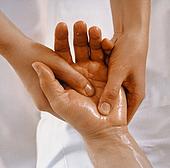A new report from Pegasus Legal Capital uncovers alarming disparities in the U.S. healthcare system, showing that women continue to suffer the consequences of a system designed with men as the default. From clinical trials to symptom recognition, the data reveals widespread gender bias that jeopardizes women’s health, safety, and well-being.
Despite comprising over half of the U.S. population, women remain underrepresented in clinical research, underdiagnosed in emergencies, and underserved by treatment plans that overlook key physiological and hormonal differences.
“This isn’t just outdated science; it’s dangerous,” said a spokesperson from Pegasus Legal Capital. “We’re seeing the real-world effects of systemic neglect, and the numbers are staggering.”
A Medical Model That Leaves Women Behind
Until 1993, women were largely excluded from clinical drug trials—a legacy that continues to shape how medical treatments are developed and administered. Even today, only 40% of clinical trial participants are women, and many studies fail to analyze outcomes by sex.
That lack of representation matters. Women’s bodies process medications differently, present different symptoms for serious conditions, and are more prone to adverse side effects, yet most protocols still center on male data.
Key findings include:
-
Women are twice as likely as men to experience adverse reactions to medications.
-
Eight medications were withdrawn from the U.S. market between 1997 and 2000 due to dangerous effects in women.
-
Female mice are still often excluded from medical research due to concerns over hormonal fluctuations.
Dismissed, Misdiagnosed, and Overmedicated
Women’s pain is too often misunderstood, misdiagnosed, or dismissed altogether. Pegasus Legal Capital’s analysis reveals that gendered stereotypes, such as the belief that women are “overly emotional,”—continue to influence how providers interpret female symptoms.
-
Over 1 in 3 women report having their healthcare concerns dismissed by a provider.
-
Nearly 50% say their concerns weren’t fully acknowledged during appointments.
-
Women are 50% more likely to be misdiagnosed after a heart attack and routinely undertreated following strokes.
Even when women are prescribed treatment, it can do more harm than good. Studies show that women are prescribed medications more frequently than men, but are also 50%–75% more likely to suffer from medication-related side effects.
Turning to TikTok for Medical Advice—A Symptom of Broken Trust
As trust in the system erodes, many women are turning to TikTok and other social media platforms for medical guidance. A study by the National Institutes of Health (NIH) found:
-
65.5% of TikTok users actively search for health content.
-
92.4% receive health information unintentionally on the app.
Though TikTok can foster peer support and fast access to information, it also exposes users to unverified content, raising the risk of misinformation, delayed treatment, and worsening conditions.
Hidden Health Risks: When Conditions Look Different in Women
Diseases don’t always manifest the same way in women as in men. Yet when women report symptoms that deviate from the male norm, they’re often not taken seriously or diagnosed too late.
-
Women experience atypical symptoms during heart attacks (such as dizziness or jaw pain), yet emergency responders are often trained to look for chest pain alone.
-
Each year, 55,000 more women than men suffer strokes in the U.S., but their symptoms—nausea, fatigue, hiccups—are more likely to be misread.
-
Women with type 2 diabetes are more prone to complications, yet tend to be diagnosed later than men.
Chronic pain conditions also disproportionately affect women. Disorders like fibromyalgia, migraines, and temporomandibular joint (TMJ) issues are more common in women, but their pain is often labeled as exaggerated or psychological.
A Global Impact—and a Path Forward
The World Economic Forum estimates that the global gender health gap costs 75 million healthy years of life annually. If addressed, this gap could lead to $1 trillion in global economic gains by 2040—thanks to better health outcomes and increased female workforce participation.
To close this gap, the medical community must:
-
Prioritize sex-specific research and equal representation in trials.
-
Ensure symptom education and diagnostic training reflect gender differences.
-
Fund female-focused medical research at all life stages—including pregnancy, postpartum, and menopause.
-
Improve provider communication and eliminate diagnostic bias.




